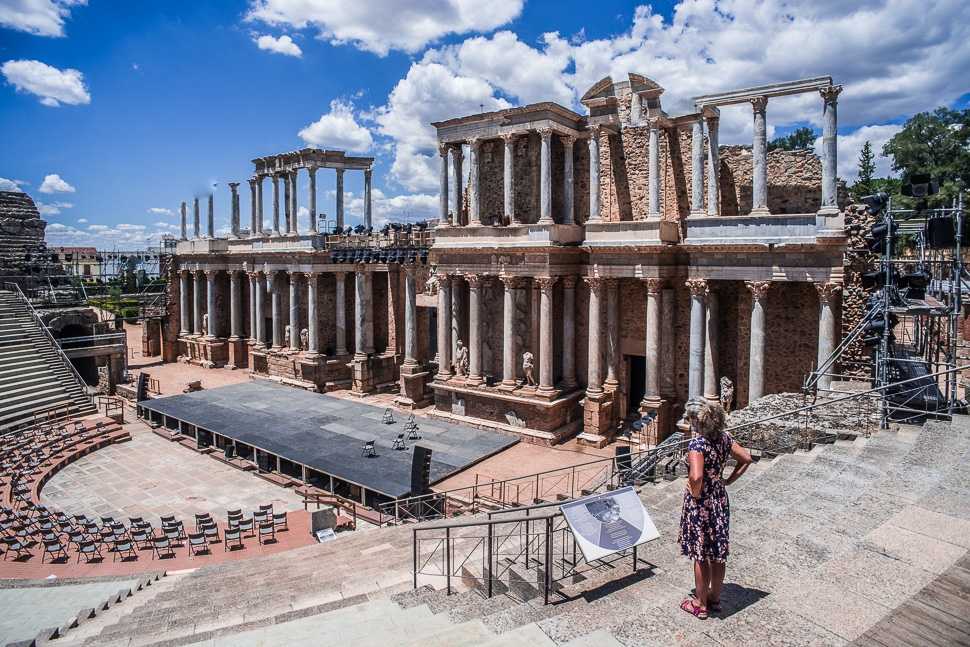Roman Theatre in Mérida: Preserved Ancient Roman Entertainment
Nestled in the heart of Mérida, Spain, the Roman Theatre stands as a testament to the grandeur of ancient Roman architecture and culture. This well-preserved site offers visitors a unique glimpse into the past, where the echoes of ancient performances still linger in the air. Whether you’re a history buff or simply looking for a fascinating day trip, the Roman Theatre in Mérida is a must-see destination.
What to See
The Roman Theatre is part of the Archaeological Ensemble of Mérida, a UNESCO World Heritage site. As you step into the theatre, you’ll be greeted by the impressive semi-circular seating area, known as the cavea, which could once accommodate up to 6,000 spectators. The stage, or scaenae frons, is adorned with beautifully preserved columns and statues, offering a striking backdrop that transports you back to the days of Roman entertainment.
Don’t miss the chance to explore the nearby Roman Amphitheatre, which is just a short walk away. This arena was used for gladiatorial contests and other public spectacles, providing a broader understanding of Roman leisure activities. Together, these sites paint a vivid picture of life in ancient Emerita Augusta, as Mérida was known in Roman times.
A Bit of History and Interesting Facts
The Roman Theatre was commissioned by the consul Marcus Vipsanius Agrippa in 15 BC, during the reign of Emperor Augustus. It was part of a broader initiative to Romanize the Iberian Peninsula, and Mérida was established as a key administrative center. The theatre underwent several renovations over the centuries, reflecting the changing tastes and needs of its audiences.
One interesting fact about the theatre is its excellent acoustics, a testament to the advanced engineering skills of the Romans. The design allows even the faintest sounds to be heard clearly from the top rows, a feature that continues to impress visitors today.
The theatre was rediscovered in the early 20th century, buried under centuries of sediment. Excavations revealed its remarkable state of preservation, and it has since become one of Spain’s most important archaeological sites. Today, the theatre hosts the annual Mérida Classical Theatre Festival, bringing ancient dramas back to life in their original setting.
How to Get There and Tips for First-Time Visitors
Mérida is easily accessible by train or bus from major Spanish cities like Madrid and Seville. The train station is conveniently located within walking distance of the Roman Theatre, making it a hassle-free journey for visitors. If you’re driving, there are several parking options available in the city center.
For first-time visitors, it’s advisable to start your visit early in the day to avoid the midday heat, especially during the summer months. The site is open year-round, but check the local schedule for any special events or performances that might enhance your visit. Guided tours are available and highly recommended, as they provide valuable insights into the history and significance of the theatre.
Wear comfortable shoes, as you’ll be doing a fair amount of walking, and don’t forget your camera to capture the stunning architecture. The theatre is part of a larger archaeological complex, so plan to spend a few hours exploring the area. There are also several cafes and restaurants nearby where you can enjoy a meal or a refreshing drink after your visit.








